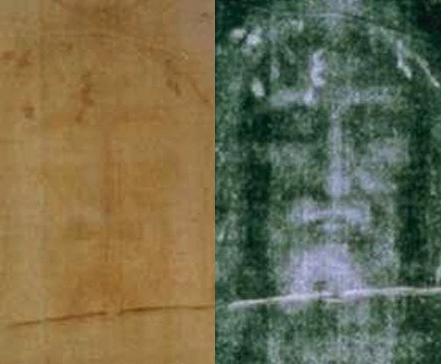Abba - you keep returning to the theme of sacrilege. I’m not a theology expert, so what exactly constitutes a sacrilege in the Catholic religion? I expect that it has a formal, canonical guideline somewhere?
Hello sojo,

I researched a little what constitutes a sacrilege and in the notes of Saint Thomas Aquinas and Saint Augustine and other Fathers of the Church, they do not specify that the images of Our Lord are sacred. It appears that they are counting as ‘sacred things’ actual paintings and statues that have been consecrated or blessed, such as the Black Madonna or the statue of Saint Anthony in Saint Patrick’s Cathedral. It would be a sacrilege to harm these sacred objects.
The Catechism of the Catholic Church does not specify that the images are sacred:
2120 Sacrilege consists in profaning or treating unworthily the sacraments and other liturgical actions, as well as persons, things, or places consecrated to God. Sacrilege is a grave sin especially when committed against the Eucharist, for in this sacrament the true Body of Christ is made substantially present for us.52
I think the images of Our Lord are sacred and would constitute an act of sacrilege to distort them. It may not be specified but, I think it is understood. My uncle Alfredo was a sculptor and I have never seen any sculptor of his that was not of a religious nature. They were mostly of Jesus, Mary and Joseph. He did his work based on the images that have traditionally been given to us faithfuls by the Church. Now, the Church may commission an image of Jesus and Mary as having dark skin and with African features but that is the Church with her authority that can do so and has in Nyungwe, Chiradzulu.
However, in commissioning and consecrating an image of Jesus and Mary with dark skin the Church is not denying that Jesus was Jewish and light skin. Jesus is God of ALL and people are dynamic and different and the Church has different devotions that appeal to certain people and not to others but that help the faithful in their spiritual journey and remain true to the faith and are inspired by the Holy Spirit. While the people that are promoting the image of the black Jesus (mainly Baptist) deny that he was light skin and claim that the Church erroneously and knowingly claimed that Jesus was light skin although he was Africanus.
Now, to take this image of the black jesus that was painted in the sixties by supposedly an unknown painter and which was made famous and is promoted by the Baptist church and promoted in a Catholic parish; well, the word I want to use is sacrilege, others may call it blasphemy. I think it is a sacrilege because I think that the image of Our Lord is sacred. The package the image carries has no business in a Catholic parish. The Church did not err with all the images of a light skin Jesus that have commisioned and consecrated nor with her teachings.
Yes, I think the images of Our Lord are sacred. Back in the eighties there was rumblings from the homosexual communities that Jesus was gay and that this is why he had no children nor had sex with women and surrounded himself with the twelve male apostles. They claimed that Jesus was very intelligent and would have seen the animalistic level of sex with a woman and reproduction. Now, if the people that were holding and promoting this ridiculous yet dangerous and possibly harmful understanding went ahead and made an image of Jesus as gay, I would consider it a sacrilege, especially, if done by Catholics.
New Advent:
(Latin sacrilegium, robbing a temple, from sacer, sacred, and legere, to purloin.)
Sacrilege is in general the violation or injurious treatment of a sacred object. In a less proper sense any transgression against the virtue of religion would be a sacrilege.
Theologians are substantially agreed in regarding as sacred that and that only which by a public rite and by Divine or ecclesiastical institution has been dedicated to the worship of God. The point is that the public authority must intervene; private initiative, no matter how ardent in devotion or praiseworthy in motive, does not suffice. Attributing a sacred character to a thing is a juridical act, and as such is a function of the governing power of the Church.
It is customary to enumerate three kinds of sacrilege: personal, local, and real. St. Thomas teaches (Summa, II-II, Q., xcix) that a different sort of holiness attaches to persons, places, and things. Hence the irreverence offered to any one of them is specifically distinct from that which is exhibited to the others. Suarez (De Religione, tr. iii, 1-3) does not seem to think the division very logical, but accepts it as being in accord with the canons.
I think that if a priest in a parish finds that it would be beneficial for the spiritual development of his parishioners to present and image of Jesus and/or Mary as of a different race he needs to consult with his Bishop. The images need to be Catholic in a Catholic parish. One solution to this could be of having a duplicate painting made of the image in Malawi and consecrating it and placing it in the parish with the Bishop’s approval. But, to just take an image from another church with all it’s implications and baggage is inappropriate to say the least. I seriously doubt that the Bishop consecrated the image of the black jesus.
To be clear, I just learned of the commission of Malawi and so it is fine to have a Catholic image of Jesus as an African. It would not be a distortion but because it is based on a
spiritual understanding not a denial of his race on earth and glorified body.
Peace,
Abba

